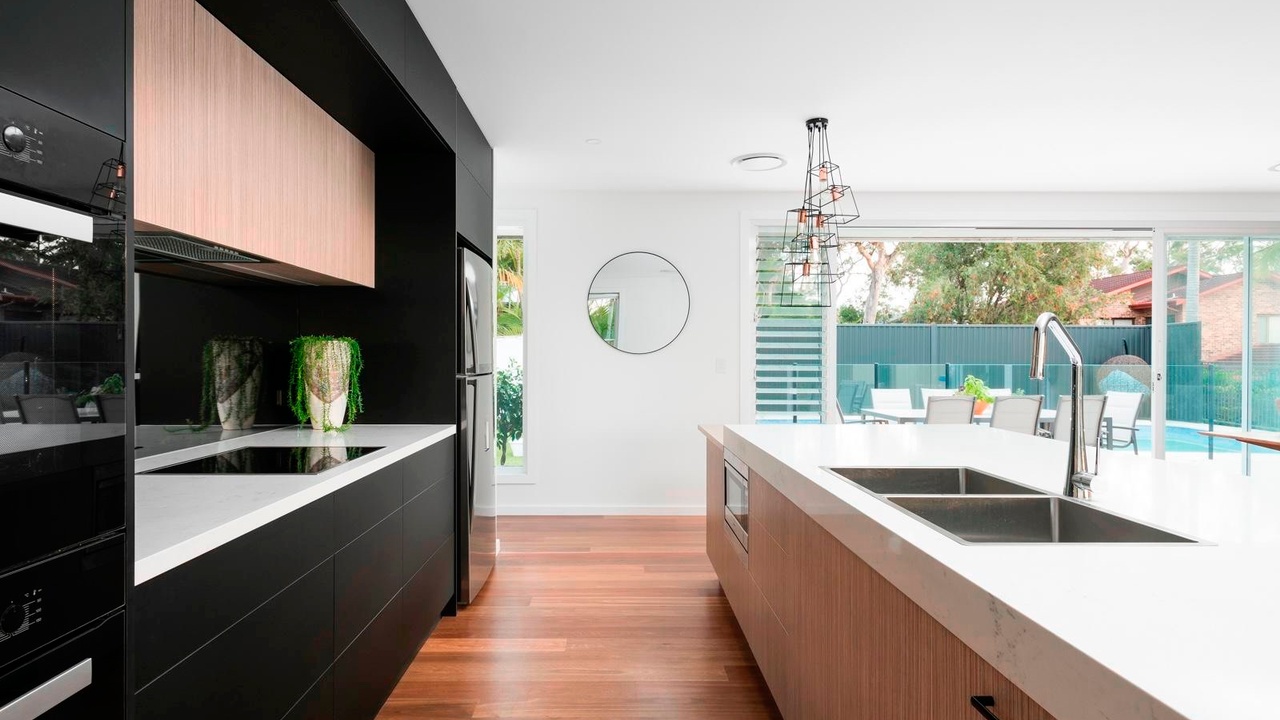Induction OR gas cooking? Let's compare the 2

The decision of whether to go with gas or electricity is not cut-and-dried with the lure of high-tech induction cooking.
Whether cooking for pleasure, pure necessity or a combination of both, you need to have a good working relationship with your cooktop in order to get the job done efficiently. In days of old, slow-reacting electric coil or hotplate stoves were the only real alternatives to gas, but vastly superior induction stovetops have changed all that – and choosing the best option to suit your needs is no longer a simple decision. Let’s take a closer look at these two options to help you avoid making the wrong choice.
mcrae + lynch design - Cronulla duplex
INDUCTION
Induction cooktops allow a very precise control of heat from very low temperatures to very high temperatures. A magnetic field makes your cookware the heating element, as opposed to the cooktop itself, enabling a much quicker conduction, control and more even spread of heat; but you must only use specific pots and pans that have a magnetic field, such as iron, cast iron and enamel. Some types of stainless steel cookware are compatible as well. A quick way of checking if your current pots and pans are suitable for induction is seeing if a magnet sticks to the base.
The only heat left in the cooktop itself when you remove a pot is from the pot’s residual heat. This leaves the cooktop cooler to the touch and reduces the risk of burns. This is also great for any spills that may occur while you are cooking. There’s no need to wait for the cooktop to cool down; it’s already cool so you can clean up spills immediately. Induction cooktops come in a variety of sizes and element combinations as well as varying price points.
 GAS
GAS
Unlike electricity, instantaneous heat is generated by a burning open flame in direct contact with the pot. This gives us the ability to instantly control the intensity of the heat by adjusting the size of the flame. Generally speaking, gas is a cheaper form of energy compared to electricity, providing you have connection to gas mains. Otherwise you would need to consider installing bottled gas for the cooktop to function, if gas is your preferred choice.
A typical gas cooktop has four outlets: a high-speed or wok burner, two medium burners and one simmer. With a gas cooktop, you can use stainless steel, glass, Corningware and pyrex cookware efficiently on the elements.
When using a gas cooktop, it is best to use the attachments known as trivets. These trivets assist in getting the most out of the heat and help to distribute the heat more evenly – otherwise you end up with a concentrated spot of heat. There are different trivets for different uses. For example, there is a trivet to use when using a wok on the high-speed burner. This trivet assists the gas flame to heat the wok evenly. It is for this reason that gas cooktops are ideal for stir fries, particularly when using a wok. A different type of trivet is used when simmering.
 What to consider when choosing between gas and induction
What to consider when choosing between gas and induction
- Does your home have gas mains available? And if not yet connected, what are the costs (and difficulties) involved in setting up a gas connection as opposed to installing an expensive induction cooktop?
- How important is ease of cleaning to you?
- Which option matches the style of your kitchen? Gas and induction are very different looking. What are your priorities when it comes to looks versus functionality?
- Are you prepared (and can you afford) to re-invest in a new set of pots and pans for induction cooking?
 The low-down: Induction cooking
The low-down: Induction cooking
PROS
- Instantaneous heat and greater control of heat
- More even spread of heat
- Safer, as there are no open flames
- Cooktop does not get hot
- Sleek looking with clean lines
- Much easier to clean
- Runs on electricity, therefore doesn’t require the added cost of connecting to gas
CONS
- Generally more expensive than gas cooktops
- Requires specific cookware
WHO WOULD IT SUIT?
- Those with a more contemporary home or sleek, clean look
- Homes that don’t have a gas mains connection available
- If you like the idea of quick, efficient cooking similar to cooking with gas, but want a high degree of safety when it comes to the cooktop itself
- Busy couples and families wanting to fast track cleaning
- Those looking for a good excuse to buy all new cookware!
 The low-down: Cooking with gas
The low-down: Cooking with gas
PROS
- Gives instant heat control due to the open flame, making it ideal for stir-fry cooking
- Easy to visually gauge heat control by looking at the flame size
- More cost effective to run if you have a connection to mains gas
CONS
- Additional cost of setting up if not connected to gas mains (or gas bottles)
- More ventilation is required due to the heat given off by the open flame
- More distance is required between cooktop and overhead cupboards and exhaust fan
- Is more difficult to clean as you need to dismantle the cast iron trivets and clean separately
WHO WOULD IT SUIT?
- Gas cooktops would be a suitable choice for those with access to a gas mains connection who like a more traditional way of cooking
- Those who frequently use a wok to stir fry and have the time or don’t mind the extra effort required to keep it clean
- Those with a more traditional home
And finally...if you can't make a decision between the two, why not combine the both! Many of the main appliance companies have combo set ups marrying the best of both worlds...happy cooking!



